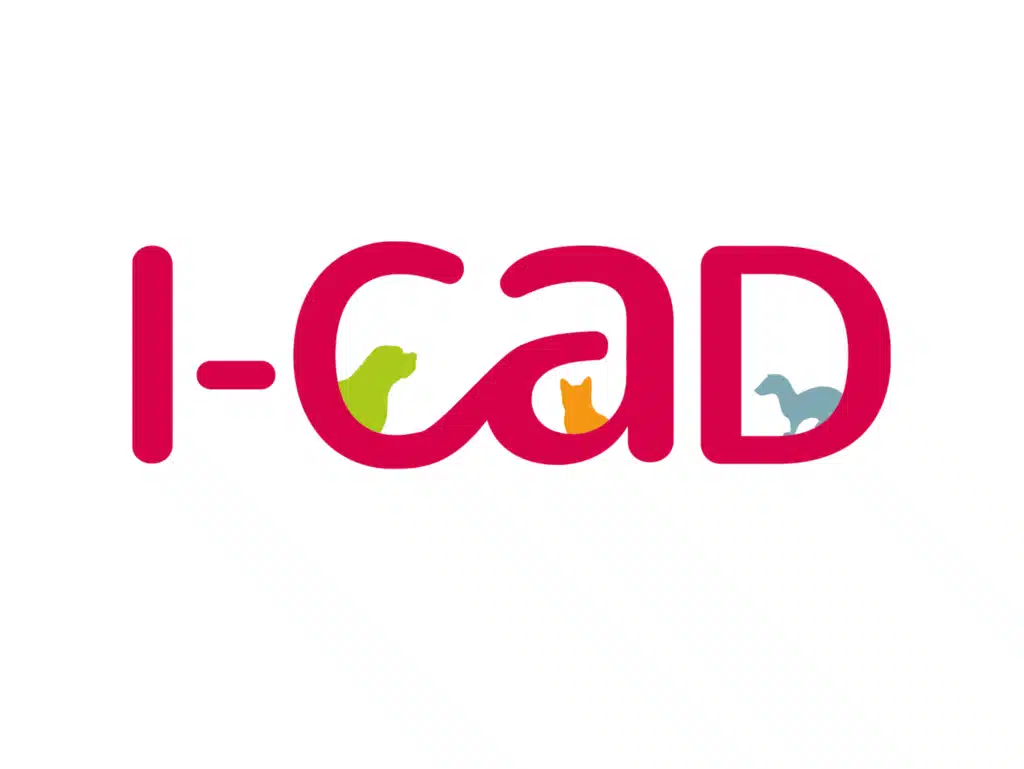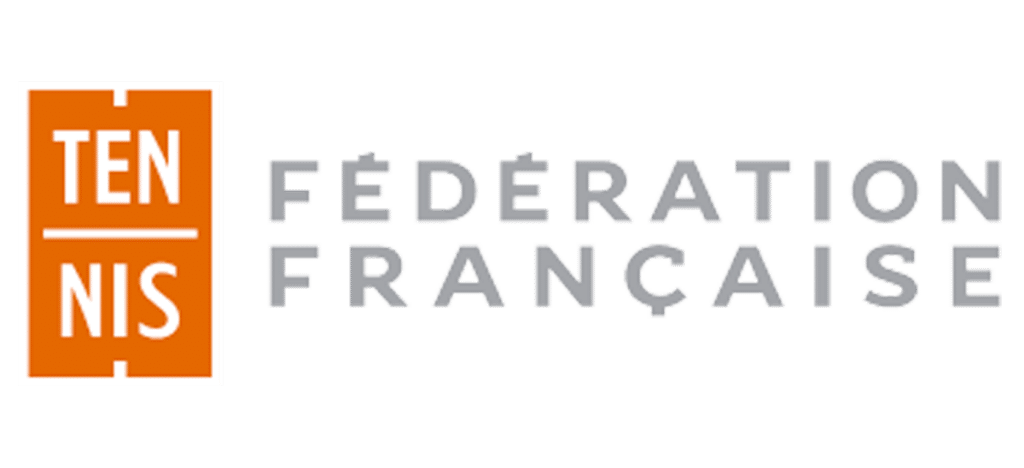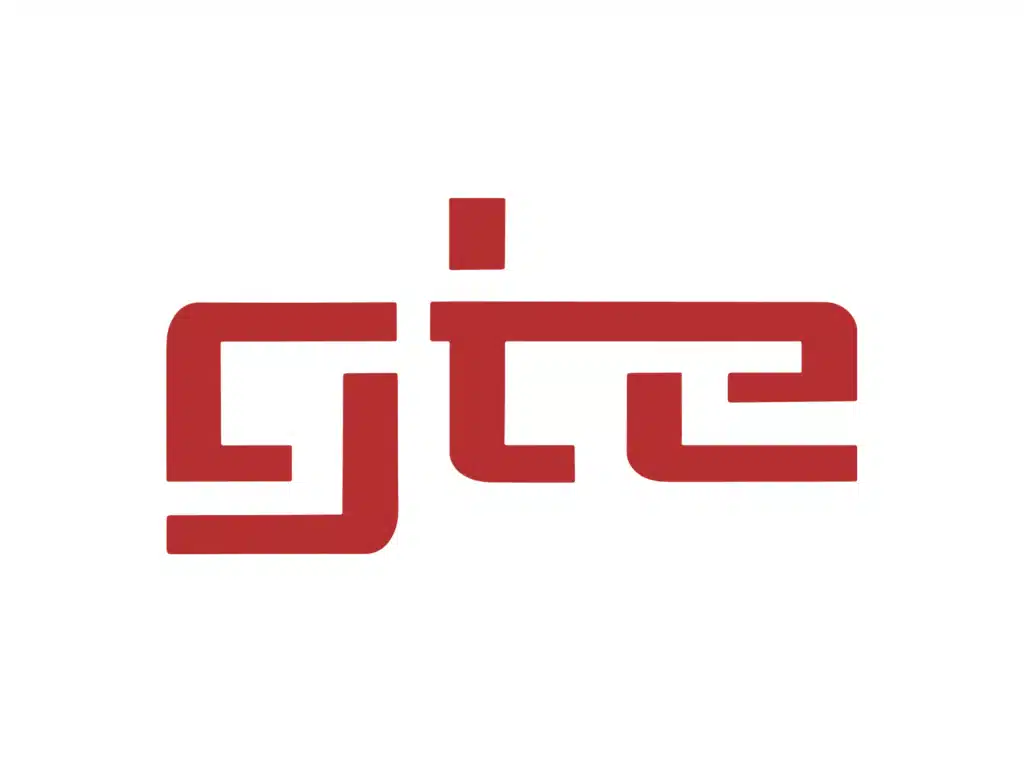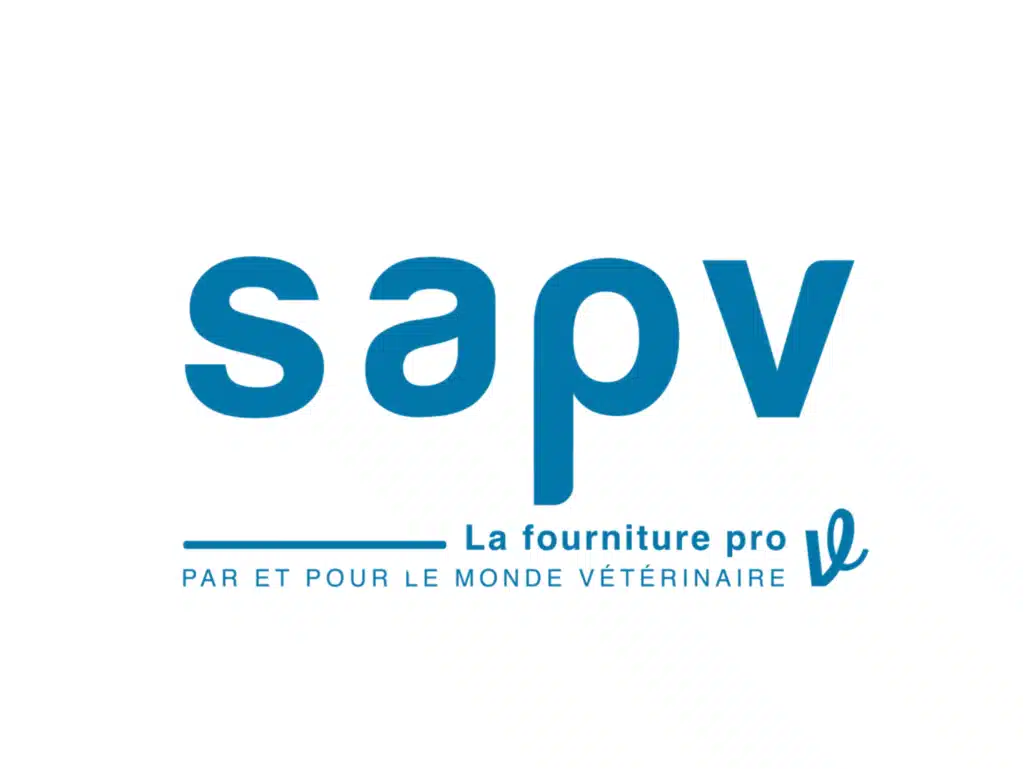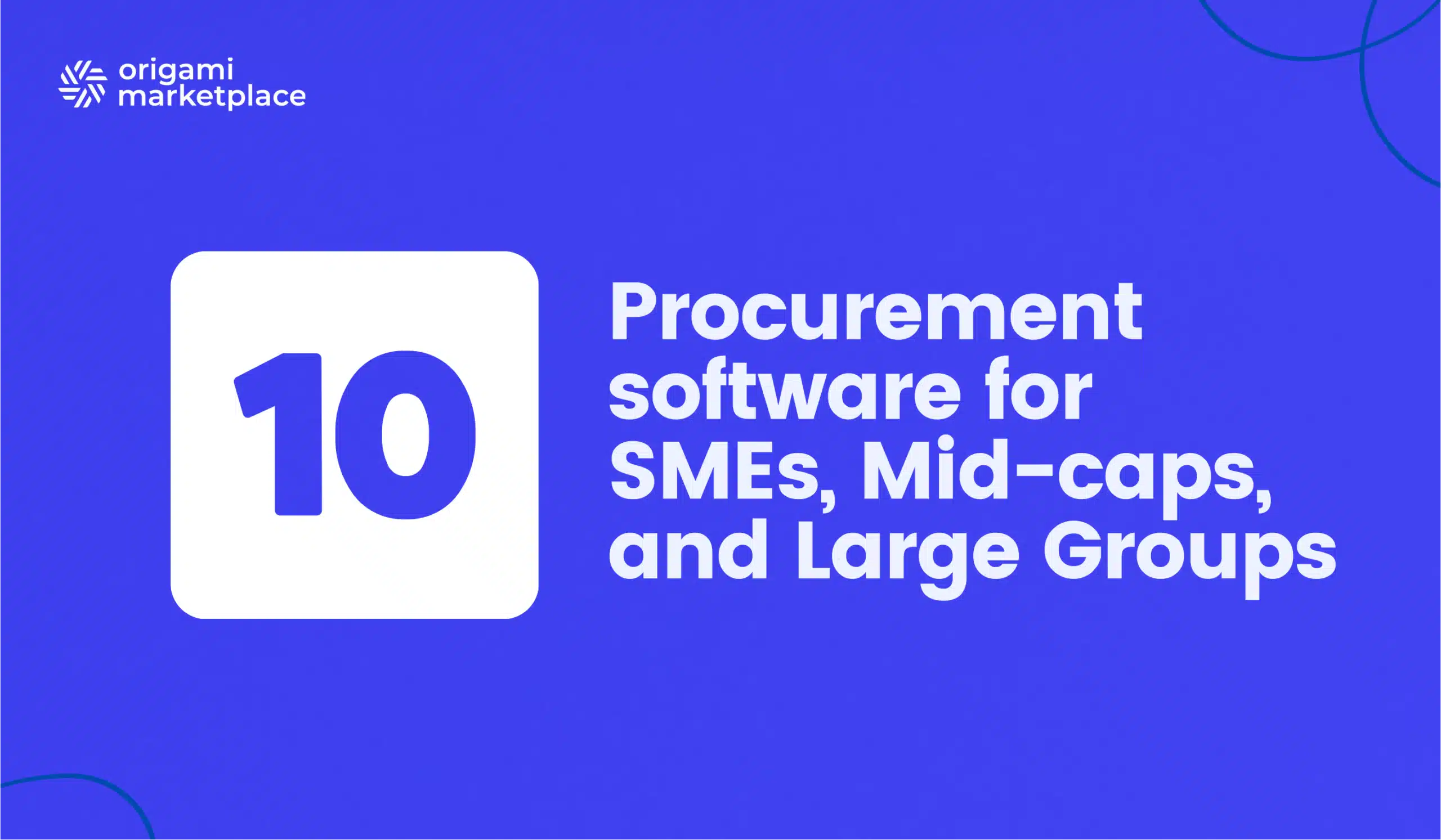E-Sourcing: The key to Digital Procurement 🔎
- Arnaud
- 10 minutes reading
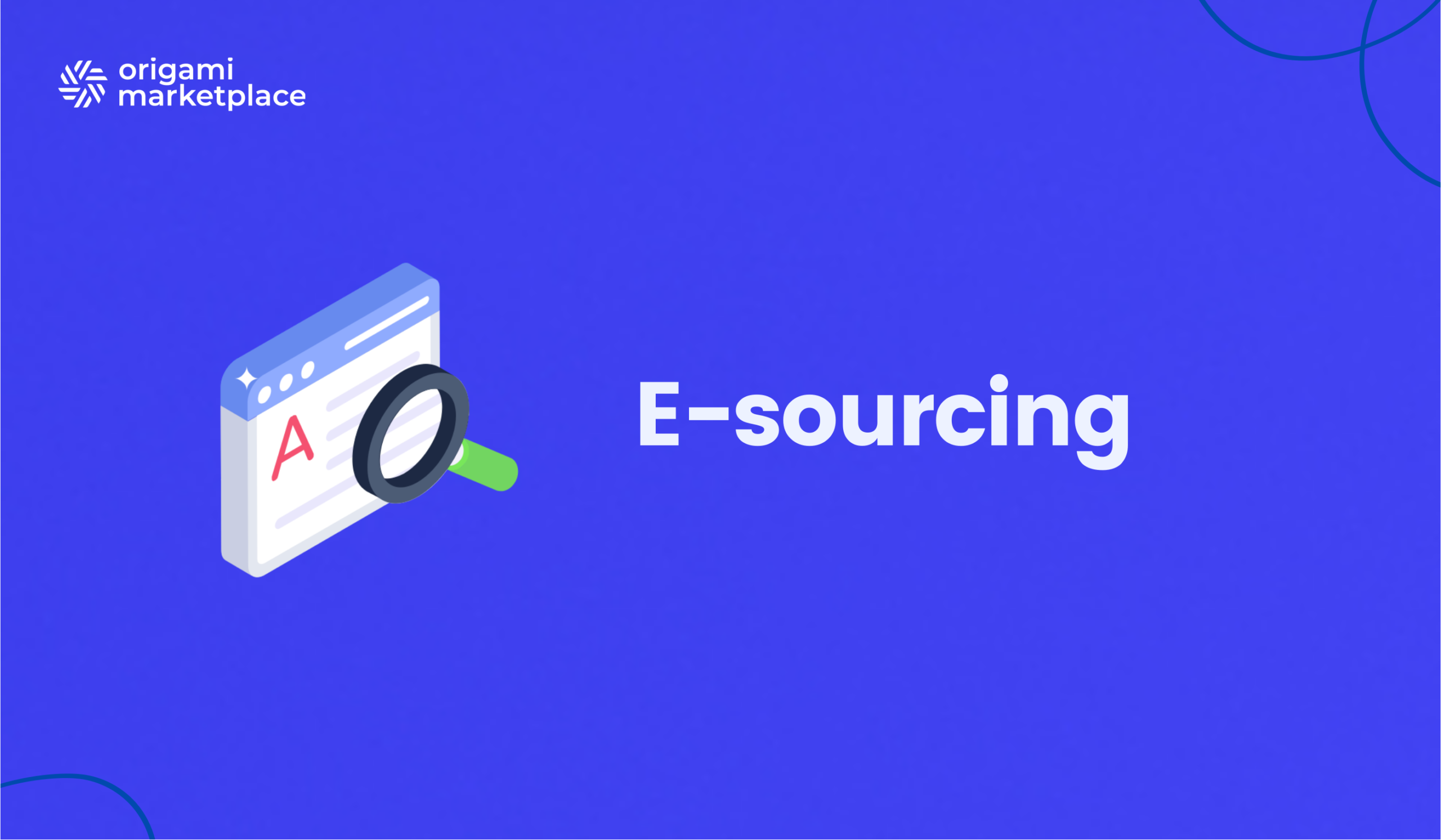
Imagine a procurement department where less time is spent juggling spreadsheets and more is dedicated to negotiating innovation with the next key supplier. Today, between price fluctuations, lengthening lead times, and ever-increasing internal demands, it’s become impossible to drive performance with shared files and endless email chains.
This is where e-sourcing comes in: not as a gimmick, but as a true digital co-pilot to identify, evaluate, and select your partners quickly and transparently. By unifying data and automating repetitive tasks, it frees up buyers for what truly matters: creating value and securing the supply chain. This guide is for procurement managers who want to shift into high gear and find everything they need to transform their procurement function into an engine of agile and sustainable performance.
- What is E-Sourcing?
- The pillars of strategic E-Sourcing
- Why adopt E-Sourcing? The concrete benefits for businesses
- The E-Sourcing process: A guide to finding and onboarding the best suppliers
- E-Sourcing tools: Choosing the right platform
- Origami Marketplace: Your E-Sourcing accelerator
- Overcoming the challenges of E-Sourcing implementation
- Change management: The Key to your digitalization success
- Trends and perspectives: The future of E-Sourcing
👋 No time to read the whole article? Find the article summary here.
1. What is E-Sourcing?
Definition of E-Sourcing
E-sourcing, or “electronic sourcing,” refers to the use of digital technologies and web-based platforms to optimize, automate, and secure the strategic activities of finding, evaluating, negotiating with, and selecting suppliers. It is an essential component of procurement digitalization, aimed at improving the efficiency, transparency, and performance of upstream purchasing processes.
Beyond simple digitization
E-sourcing is not just about digitizing documents or sending emails. It encompasses a suite of strategic tools and features that enable organizations to:
- Manage RFx (Requests for x): Create, distribute, and collect responses to Requests for Information (RFI), Requests for Proposals (RFP), and Requests for Quotations (RFQ) in a structured, centralized, and auditable manner.
- Identify and Qualify Suppliers: Access extensive supplier databases to evaluate their capabilities, certifications (quality, ESG, etc.), and regulatory compliance.
- Conduct Reverse Auctions (eAuctions): Run online auction events where suppliers bid in real-time to win a contract, fostering healthy competition and cost optimization.
- Analyze Data for Decision-Making: Leverage data collected through dashboards to make informed decisions, identify savings opportunities, and optimize sourcing strategies by category.
- Collaborate with Stakeholders: Facilitate real-time communication and collaboration between procurement teams, internal departments (e.g., finance, operations), and suppliers.
E-Sourcing vs. E-Procurement: A fundamental distinction
While often confused, e-sourcing and e-procurement are two distinct yet complementary phases of the digital procurement process. Understanding their differences is key to a successful Source-to-Pay (S2P) strategy.
- E-sourcing focuses on the upstream strategic phase: finding, evaluating, and selecting suppliers. Its goal is to answer the question: “Who should we work with?”. It’s about finding the right partner for the right need at the best total cost of ownership under the best contractual terms.
- E-procurement covers the downstream operational phase: managing purchase orders, electronic catalogs, receiving, invoices, and payments. Its goal is to answer the question: “How will we work with our already selected suppliers?”. It aims to simplify and automate daily transactions.
In short, e-sourcing builds the strategic foundation of the supplier relationship, while e-procurement manages its transactional execution.
| Characteristic | E-Sourcing (Strategic) | E-Procurement (Operational) |
|---|---|---|
| Primary goal | Identify, evaluate, and select the best suppliers; optimize contract terms and total cost of ownership (TCO). | Automate and simplify the transactional purchasing process, control spending, and ensure compliance. |
| Procurement cycle phase | Upstream: from identifying a need to signing a contract (Source-to-Contract). | Downstream: from purchase requisition to payment (Procure-to-Pay). |
| Key activities | Market analysis, RFx management (RFI, RFP, RFQ), reverse auctions, supplier qualification, negotiation, contract management. | Purchase requisition management, purchase order (PO) creation, catalog management, invoice matching, payment management. |
| Typical tools | Bidding platforms, auction modules, supplier databases, spend analysis tools, Contract Lifecycle Management (CLM) software. | E-procurement software, Punch-Out catalogs, supplier portals, invoice automation solutions. |
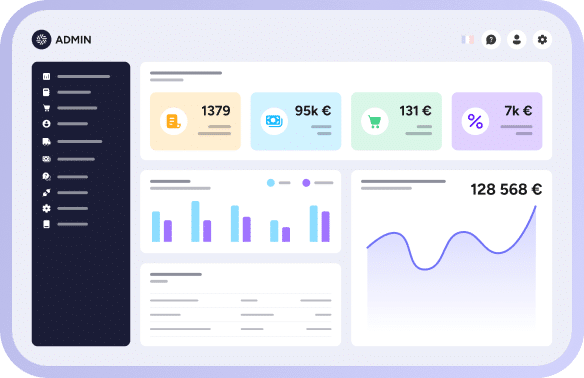
2. The pillars of strategic E-Sourcing
Strategic sourcing is a proactive, holistic approach to optimizing a company’s supplier base to achieve long-term business goals that go far beyond simple cost reduction. To structure this approach, procurement professionals often rely on analytical frameworks like the Kraljic Matrix.
The Kraljic Matrix
Developed in 1983, the Kraljic Matrix remains a fundamental tool for segmenting a company’s purchases based on their impact on profitability and their supply risk. E-sourcing doesn’t replace this strategic logic; it provides the tools to execute it with massively increased efficiency.
| Bottleneck Purchases Low profit impact, High risk |
Strategic Purchases High profit impact, High risk |
|
|---|---|---|
| Strategy | Secure supply, manage dependence, seek alternatives. | Develop long-term partnerships, collaborate on innovation, proactively manage risks. |
| E-sourcing Contribution | Platforms enable continuous market watch and rapid RFI launches to identify alternative suppliers and reduce dependency. | SRM tools centralize performance tracking and facilitate structured collaboration. Data transparency builds trust. |
| Non-critical Purchases Low profit impact, Low risk |
Leverage Purchases High profit impact, Low risk |
|
|---|---|---|
| Strategy | Standardize products, automate processes, optimize transactional efficiency. | Aggressively put suppliers in competition, group volumes, negotiate the best prices. |
| E-sourcing Contribution | RFQ automation for standardized products and integration with e-procurement platforms radically simplify the process. | Reverse auctions (eAuctions) are the perfect tool to maximize real-time competition and obtain the most favorable conditions. |
How E-Sourcing strengthens these fundamental pillars?
E-sourcing transforms and amplifies the efficiency of every stage of the strategic sourcing process:
- Analysis of needs and the supplier market: E-sourcing platforms offer instant access to global supplier databases, market analysis tools, and integrated intelligence features. They allow for large-scale RFI distribution to quickly map a market and identify new players.
- Supplier selection and qualification: Digitalization standardizes information gathering. Proposals are received in a uniform format, facilitating objective comparisons. Automated scoring systems assess suppliers against dozens of criteria (price, quality, ESG, financial stability) consistently and traceably, reducing human bias and drastically speeding up selection.
- Negotiation and contracting: Reverse auctions create powerful competitive dynamics, pushing suppliers to offer their best price in real-time. This transparent and auditable process ensures optimal terms. Integration with Contract Lifecycle Management (CLM) solutions allows for a seamless transition from selection to e-signature and secure contract archiving.
- Supplier relationship management (SRM) and performance monitoring: E-sourcing doesn’t stop at the contract signature. Platforms centralize all supplier interactions and performance data, offering a 360-degree view of the relationship. Dashboards enable real-time tracking of KPIs, allowing for proactive risk management throughout the contract lifecycle.
3. Why adopt E-Sourcing? The concrete benefits for businesses
Adopting e-sourcing is no longer just an optimization choice but a strategic imperative for companies that want to remain competitive. The benefits are tangible, impacting financial performance, operational efficiency, risk management, and innovation capacity.
Cost optimization and efficiency gains
This is often the primary driver of adoption, with rapid, measurable results.
- Reduced acquisition costs: By increasing competition through electronic bidding and reverse auctions, companies achieve better pricing. Studies show savings can reach 15% to 25% in categories sourced with these tools.
- Time savings and automation: Automating repetitive administrative tasks (creating and sending RFx, consolidating responses, comparing offers) is a major benefit. Research indicates that e-sourcing can reduce sourcing cycle times by over 50%.
- Reduction in manual errors: Standardizing processes and centralizing data minimize the risk of manual entry errors, improving information reliability.
Improved transparency and risk management
In an uncertain world, risk management has become an absolute priority for purchasing departments.
- Increased transparency and trust: E-sourcing platforms offer full visibility into processes and decisions. This provides a complete audit trail for the company and ensures fair treatment for suppliers.
- Better supplier risk management: Centralizing all supplier information (financial health, certifications, compliance audits) enables a more rigorous and continuous assessment of risks (financial, operational, reputational, geopolitical). The ability to quickly identify new suppliers enhances supply chain resilience.
- Facilitated collaboration: Integrated tools improve communication and information sharing, fostering strategic partnerships.
Innovation and competitive advantage
E-sourcing is a powerful driver of long-term competitiveness.
- Access to a global innovation marketplace: Digital platforms open doors to a global pool of suppliers, including innovative startups and SMBs that would be invisible with traditional methods.
- Data-driven decision making: Spend analysis and performance dashboards provide procurement managers with real-time, accurate information to make strategic decisions.
- Increased agility and responsiveness: In a volatile market, e-sourcing allows companies to react quickly to disruptions by rapidly launching an RFx to find alternative solutions.
To maximize internal buy-in, start your e-sourcing approach with a “quick-win” category: low technical complexity, a supplier panel that is already competitive, and a volume of expenditure high enough to generate visible savings (e.g. travel costs, IT consumables or standard packaging). In 6 to 8 weeks, you'll be able to demonstrate a concrete ROI, produce an exemplary use case and create leverage to convince other teams to adopt the platform.

Alexandre Duquenoy
→ Talk to our expert
4. The E-Sourcing process: A guide to finding and onboarding the best suppliers
E-sourcing structures the search for new suppliers into a logical, optimized process. Here are the key steps:
Step 1: Defining needs and mapping spend
Before any search, it’s crucial to precisely define the company’s needs: technical specifications, forecasted volumes, quality requirements, deadlines, and budget. At the same time, establish the selection criteria that will be used to evaluate suppliers. E-sourcing platforms help by providing templates for specifications and customizable evaluation scorecards.
Step 2: Market research and supplier discovery
This is where digital tools unleash their power. Instead of tedious manual searches, e-sourcing platforms provide access to vast databases of qualified suppliers. Advanced search and filtering features make it possible to quickly identify a wide range of relevant candidates.
Step 3: Qualification and launching RFx
Once a list of potential suppliers is established, the qualification process begins. A Request for Information (RFI) can be launched to gather general information. For shortlisted candidates, a Request for Proposal (RFP) is issued to evaluate their technical and business solutions, or a Request for Quotation (RFQ) if the need is standardized and price is the main criterion. E-sourcing automates the distribution of these documents and standardizes the collection of responses.
Step 4: Offer evaluation and negotiation (eAuctions)
RFx responses are collected directly on the platform, eliminating manual data consolidation. Comparison and scoring tools allow for an objective evaluation of each supplier based on the predefined criteria. For price-driven purchases, this phase can be supplemented with a reverse auction (eAuction) where pre-selected suppliers submit increasingly competitive bids in real-time.
Step 5: Selection, contracting, and onboarding (Awarding)
The supplier offering the best overall value is selected. The e-sourcing platform can then facilitate the contracting phase, integrating with Contract Lifecycle Management (CLM) modules for drafting, internal approval, e-signature, and secure archiving. Once the contract is signed, the new supplier is formally onboarded into the company’s systems (ERP, accounting software).
5. E-Sourcing tools: Choosing the right platform
The e-sourcing software market is dynamic, offering a variety of solutions for different company sizes and maturity levels. A complete e-sourcing solution is typically modular and may include:
- RFx management: The core of the solution, for creating, distributing, and analyzing RFIs, RFPs, and RFQs.
- eAuctions: A specific module for running reverse, Japanese, or Dutch auctions.
- Supplier management (SRM/SPM): Tools to manage supplier information, track performance (Supplier Performance Management), and manage the relationship (Supplier Relationship Management).
- Spend analysis: Analytics tools to map company spending and identify savings opportunities.
- Contract lifecycle management (CLM): Modules for creating, storing, and tracking supplier contracts.
When evaluating platforms, key criteria to consider include user-friendliness, integration capabilities with existing systems like ERPs, scalability, and security and compliance with regulations like GDPR.
Overview of E-Sourcing platforms on the market
The landscape of e-sourcing solutions is varied, ranging from comprehensive suites for large enterprises to more agile tools for SMEs and SMBs.
| Platform | Primary Target | Key Strength |
|---|---|---|
| SAP Ariba | Large Enterprises | Deep, native integration with the SAP ecosystem; very extensive supplier network. |
| Origami Marketplace | SMBs, Mid-market, Large Enterprises | Specialized platform for digitizing sourcing and creating purchasing groups or collaborative networks. |
| Ivalua | Mid-market & Large Enterprises | Very complete and modular Source-to-Pay suite, strong capabilities for managing direct and complex spend. |
| Coupa | SMBs, Mid-market, Large Enterprises | Unified "Business Spend Management" platform, known for its user-friendly design and experience. |
| Esker | SMBs & Mid-market | Integrated solution that aligns Procurement and Finance, strong on S2P cycle automation. |
| Tradogram | SMBs & Mid-market | Platform focused on simplicity and efficiency for managing requisitions, approvals, and orders. |
6. Origami Marketplace: Your E-Sourcing accelerator
Choosing the right technology isn’t enough you need the right partner. Origami Marketplace delivers both, combining an ultra-intuitive platform with expert guidance to make your procurement digitization a rapid and measurable success.
Here’s why it works:
- Plug-and-play simplicity: A clean, intuitive interface with zero learning curve guarantees adoption by all buyers and internal stakeholders.
- Seamless integration: With native connectors for your ERP and financial systems, your data flows freely, eliminating silos.
- Tailored onboarding: We provide agile training for your internal teams and key suppliers to get them up and running fast.
- Built-in Procurement expertise: Get tactical advice from our experts to optimize your sourcing events and maximize ROI.
With Origami Marketplace, you gain time, savings, and peace of mind. It is the truly strategic solution to digitize your procurement or create a centralized purchasing group a model already adopted by numerous leading companies today.
7. Overcoming the challenges of E-Sourcing implementation
Before deploying your e-sourcing solution, it’s essential to map the obstacles that cause most projects to fail. The table below summarizes the three main challenges and their solutions:
| Major challenge | Primary risk | Quick solution |
|---|---|---|
| Internal resistance | Low adoption rate, lack of skills | Involve teams early, provide just-in-time training, showcase quick wins. |
| Technical & financial barriers | Data silos, uncertain ROI | Use open APIs + a rapid Proof of Concept (POC), build a data-driven business case, conduct security audits. |
| Supplier adoption | Fewer competitive bids | Provide a simplified portal, host onboarding webinars, offer dedicated assistance. |
By simultaneously addressing these three areas: human, technical and supplier ecosystem, you can secure your digital investment and maximize e-sourcing adoption right from the start.
8. Change management: The Key to your digitalization success
Implementing an e-sourcing platform is not just an IT project; it’s a true evolution of the procurement culture. Without solid human support, even the best technology will remain underutilized. Here is a complete change management plan based on five key levers:
- Shared vision: Visible executive sponsorship and clear goals (e.g., -40% RFQ cycle time, 80% user adoption).
- Co-construction: Workshops with buyers, stakeholders, and key suppliers to define best practices.
- Continuous communication: Project newsletters and regular updates that highlight quick wins (e.g., an entire bid process completed in 5 days).
- Targeted training: Short, role-based modules and “learning by doing” in a sandbox environment, supported by FAQs and Q&A sessions.
- Phased rollout: Start with a POC in one category, track 3 KPIs (adoption, cycle time, savings), and then expand in waves.
In short: a clear vision, committed users, transparent communication, enhanced skills and gradual deployment are the key to transforming e-sourcing into a sustainable driver of purchasing performance.

9. Trends and perspectives: The future of E-Sourcing
Procurement digitization continues to accelerate, driven by major technological advances and new strategic priorities.
AI and intelligent automation
AI is no longer a futuristic concept. Nearly 76% of procurement leaders plan to adopt AI by the end of 2024. Its impact on e-sourcing is profound:
- Predictive sourcing: AI analyzes massive datasets to anticipate future needs, predict price fluctuations, and recommend proactive sourcing strategies.
- Supplier matchmaking: Smart algorithms automatically identify and recommend the most relevant suppliers based on performance, risk, and compatibility.
- Automated negotiations: For certain purchasing categories, AI agents can conduct simple negotiations and analyze contract clauses, freeing up buyers for more strategic deals.
Supply chain resilience and risk management
Recent global disruptions have put resilience at the top of the agenda. E-sourcing is an essential tool for building robust supply chains:
- Supplier Diversification: Platforms make it easier to identify and qualify suppliers in different geographic regions (nearshoring, reshoring), reducing dependency on a single source.
- Real-time Risk Analysis: Integrating external data feeds (financial, geopolitical, climate) into e-sourcing platforms enables continuous monitoring of supplier risks.
Sustainability (ESG) as a strategic performance criterion
Environmental, Social, and Governance (ESG) criteria are no longer just a box to check. They have become a central part of corporate strategy.
- Responsible sourcing: E-sourcing allows for the integration of ESG criteria directly into RFPs and evaluation scorecards.
- Traceability and reporting: Platforms centralize supplier ESG compliance data, facilitating supply chain traceability and generating reports for stakeholders.
E-Sourcing is a game-changer for Procurement
E-sourcing is already transforming the procurement function. It means fewer spreadsheets, more performance, and a supply chain that is finally transparent and secure. So, what’s the next step? The marketplace model. More and more companies are shifting to multi-vendor platforms that offer the same seamless experience as B2C sites: instant search, transparent comparisons, and ordering in just a few clicks exactly like on Amazon.
The result: sourcing becomes faster and more competitive, and procurement teams are transformed into true engines of innovation.
The gist in 60 Seconds.
- E-sourcing digitizes procurement: ditch the spreadsheets for a single, automated control tower.
- Immediate gains: 15-25% savings, RFQ cycles cut in half, and real-time supplier visibility.
- Key Hurdles: Overcome human resistance, IT integration challenges, and supplier adoption with targeted change management.
- Success Factors: An executive sponsor, co-creation with users, concise training, a phased rollout, and clear KPIs are critical.
In short, e-sourcing optimizes your costs and agility now; the marketplace will soon make it the norm.
👉 Need a turnkey solution? Call on a specialized service provider like Origami Marketplace to accelerate your project. Discover how our API and partner network can transform your business, whatever its size, thanks to its innovative solution based on the marketplace model.
FAQ
E-sourcing is the upstream strategic phase of finding, evaluating, and selecting suppliers (the “who”). E-procurement is the downstream operational phase that manages transactions with approved suppliers, such as purchase orders and invoices (the “how”). The two are complementary for a complete Source-to-Pay digital transformation.
Studies show that savings can reach 15% to 25% on purchasing categories sourced via e-sourcing tools.
E-sourcing is suitable for businesses of all sizes. While large enterprises have long used these tools, many modern platforms are designed to be agile and affordable for SMBs and mid-market companies.
Focus on a change management plan that includes involving teams early, demonstrating quick wins on a pilot project, providing targeted training, and clearly communicating the benefits, such as reducing administrative tasks and enabling more strategic work.

